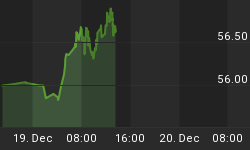The monstrous typhoon that pounded away at coastal areas of the Pacific last weekend certainly qualified as a disaster for anyone who happened to be in its path. But for those of us safely in bed, the storm not only provided some remarkable meteorological footage, but also a stealth lesson in economics.
The most dramatic image, which involved a water torrent sucking away the sand beneath a stoutly built six-story hotel, struck me as an apt metaphor for the current economic environment. As the hotel's foundations became exposed, the building toppled over like a massive domino. It was a vivid reminder that no structure, no matter how mighty, is safe if its foundation is weak.
Since the financial deluge erupted last year, the authorities, at least in the United States, have concentrated their repair efforts on the upper floors of our economy, and have virtually ignored the rotting foundation beneath.
Since 1971, when President Nixon broke the last link between gold and the U.S. dollar, American politicians have unleashed an ever-increasing number of entitlement projects designed to boost consumerism. With some 70 percent of our economy now based on consumption, we can safely say they accomplished their aim.
Following Alan Greenspan's financing of the largest asset boom in the history of the Fed, America now faces massive deleveraging and a severe recession. However, it is becoming increasingly clear that neither the Obama Administration nor Congress have the slightest appetite for the political costs of deleveraging. Instead, the government has decided to lavish unprecedented trillions more of borrowed dollars on preventing a natural deleveraging from taking place.
Today, the official U.S. Treasury debt stands at a shocking $13 trillion, or 100 percent of the (declining) total wealth created in the United States each year (GDP). But total federal debt amounts to an almost unimaginable $56 trillion, or 4.3 times GDP.
Notwithstanding this precarious state of affairs, the government intends to spend trillions more dollars on wealth-consuming entitlement projects such as education, health care, auto sales, and the pursuit of fruitless wars in Iraq and Afghanistan.
America still has the largest economy in the world, but that doesn't mean that it is the richest. Although Americans enjoy one of the world's highest standards of living, they are also its largest debtors. As a result of the debt, which is subtracted from output, the worldwide rank of U.S. GDP is not first, as most would expect, but fifteenth!
For many years, two factors have prevented rank-and-file Americans from perceiving the weakness of our economic foundation. First, the international reserve status enjoyed by the U.S. dollar has delayed severe price erosion and allowed Americans to buy imports at a falsely advantageous price. Second, American living standards have long been heavily financed from abroad, most notably today by China.
The Chinese have recently expressed grave concerns about depreciation of their dollar-denominated assets and openly challenged the reserve status of the dollar. As Chinese support is vital to our currency's continued viability, these threats are bound to exert downward pressure on the price of the dollar. In short, China is increasingly unwilling to finance America's falsely high standard of living. If the Chinese pull out, where else can the U.S. turn?
Last week, in response to questions about the sustainability of Washington's spending spree, Tim Geithner uttered one of the more ambiguous phrases ever from a sitting Treasury Secretary, saying, "the government will have to do what the government has to do." His comments went unexplained and could have referred to massive future tax increases. More ominously, they could have hinted any measure from an extended "bank holiday," to currency exchange controls, or even to a massive devaluation of the U.S. dollar (similar to the 75 percent devaluation instigated by Franklin Roosevelt in 1934).
Increasingly, it appears that the government is aware that its reckless expenditures will be financed less by foreigners and increasingly by current, and more importantly future, U.S. taxpayers - and potentially by a severe devaluation of the dollar.
It does not take a student of architecture to grasp that America's very structure is becoming more and more vulnerable to the shifting sands of economic policy being made in foreign capitals, and blowing upon our shores.
For a more in-depth analysis of our financial problems and the inherent dangers they pose for the U.S. economy and U.S. dollar, read Peter Schiff's 2007 bestseller "Crash Proof: How to Profit from the Coming Economic Collapse" and his newest release "The Little Book of Bull Moves in Bear Markets." Click here to learn more.
More importantly, don't let the great deals pass you by. Get an inside view of Peter's playbook with his new Special Report, "Peter Schiff's Five Favorite Investment Choices for the Next Five Years." Click here to dowload the report for free. You can find more free services for global investors, and learn about the Euro Pacific advantage, at www.europac.net.















